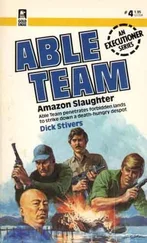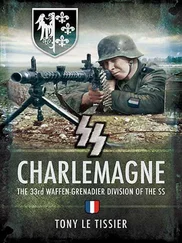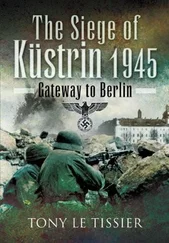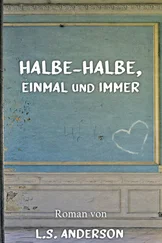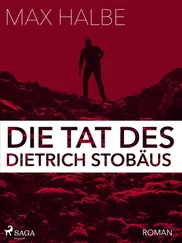We lay there all night long and then joined the refugees from Baruth next morning, running for our lives across the meadows and being shot at by low-flying aircraft. We came to Radeland, where white flags already hung from the windows, and were most kindly taken in by the Hillebrands family, fed and clothed. Then the first Russians arrived and fighting started in the woods. We were hidden as well as possible in the hayloft. We two nurses then tended the German wounded that the local people brought to us in an abandoned farmhouse, laying them on straw, cutting off their blood-crusted uniforms, destroying the Waffen-SS uniforms, washing the wounded and trying to tend to them without medicine or bandages. Everything we could find was used. The people from the village helped with food, whatever they could find, for the hunger was very great. Even a doctor appeared from somewhere. We amputated with a handsaw. There was a terrible stench. All the amputees and the dead were put in a barn. There were 145 men with head or stomach wounds and they all died. Soldiers even died of tetanus from small wounds. We could only comfort them as they died. The youngest was only just sixteen years old. He died from a shot in the kidneys – very slowly. About 100 lightly wounded we treated as walking cases and sent them on. We worked day and night, and only slept in hiding. Whenever Soviet controls came, we would literally hold out the excrement buckets under their noses so that they would give up.
We did not record the names of the dead, as we had nothing to write with, and also no time. Apart from that, none of us believed that we would get back home alive. One of our doctors collected their identity discs. Hopefully, they reached the right place.
About mid-May Soviet officers made it clear to us that everyone that was half fit to work, or would soon be fit to work, would be deported to the Soviet Union. Several of us quickly got away, including myself. I only wish that some of them survived, so that our help had not been in vain. [2] Schulze, Der Kessel Halbe–Baruth–Radeland , pp. 87–8.
Expediency resulted in many of the dead being buried without any record of name or location being made, the bodies being dragged to and tipped into the nearest trenches and shellholes.
Herr G. Fonrobert, an inhabitant of Halbe, where some 4,000–5,000 had been killed, [3] Article by Günter Führling in Deutsche Militärzeitschrift , Nr. 14.
wrote:
After the surrender was finally achieved on 1 May, we inhabitants of the village were immediately put to burying the dead, and for weeks there was nothing else to think about, as thousands of bodies had to be buried, mainly in quickly-dug makeshift mass graves. And, as a result of the warm spring sunshine, it was necessary to do it quickly. Afterwards there were many months of superficial clearing up of the roads and woods of the war materiel of all kinds lying around, including shot-up army vehicles, guns and tanks that had to be towed away. But everywhere in the woods around for an even longer time there was a smell of decay and fire that persisted for months. [4] Halbe mahnt…! 1963 pamphlet, p. 17.
Erwin Hillebrands, then twelve years old, related:
I remember 600–700 dead being buried in three layers in a U-shaped grave at the entrance to Radeland, civilians, soldiers and even children. They were carried out together from the fields and woods around, only a few from the village itself. This quick burial was carried out on the instructions of the Soviet commandant responsible. An epidemic had to be avoided. Sometimes the corpses fell apart or had been eaten by foxes. It was a nauseating task. They pushed the bodies with poles into a suitable or shallow hollow, or simply covered them with sand. If Soviet soldiers were present, it was strongly forbidden to remove the identity discs; the dead were to remain anonymous. The exhumation of this mass grave took place at night in about 1951. [5] Schulze, Der Kessel Halbe–Baruth–Radeland , p. 54.
Hilde Neufert, who was twenty-two at the time, vividly recalled the horrors of this task:
When the fighting was over in Märkisch Buchholz, the Russians immediately ordered the men and women, the boys and girls too, to bury the dead, although ‘bury’ was hardly the right word for it.
There was a mobile workshop in our yard, and the Russians were recovering all kinds of vehicles from the woods. On one occasion there was a Wehrmacht ambulance full of corpses. We had to unload them, all of whom, apart from their wounds, had had a bullet in the back of the neck. We had to throw their bodies mostly into bomb craters, pits and trenches under the eyes of the guards, and then cover them over.
There was a big bomb crater near our house. Once it had been filled to the top, Christmas decorations that an officer had found in our house, balls and ribbons, were strewn over it and trampled in.
I can still recall today when we removed the dead from the woods outside the village and laid them down in a row on the roadside to await transport; it was quite a long row. Suddenly a tank appeared, which changed course from the middle of the road and rolled back and forth several times over the row of corpses. But that was not enough. Finally the tank swivelled around on the remains, mashing them into the sand, and the commander, an officer, shouted at us as we looked on in horror: ‘Gittler kapuut! Deitschland kapuut! Wehrmacht kapuut! Soldat kapuut! Nix mehr da! Ha-ha-ha!’
Then we had to pick up the squashed remains out of the sand with bloody hands and put them in a shellhole. [6] Schulze to author.
Willi Klär concluded his account of events he witnessed at Kummersdorf Gut:
On the morning of 30 April the inhabitants left the cellar of the old folks’ home and returned to their own homes, only to be met by an horrific scene. Corpses were lying all over the place, about 2,000 of them, men, women and children who had been killed in the woods, in the village and on the ranges.
On the morning of 1 May all the men remaining in the village were rounded up at the old folks’ home, whose hall was crammed with wounded German soldiers. All who could walk, whether soldiers or civilians, were led off as prisoners to Sperenberg, where the square between the chemist and the station bar was crowded with them all. They were then divided up into large groups and marched off under escort towards Rehagen, Mellensee, Zossen, Nächst Neuendorf and Glienick to Gross Schulzendorf, which they reached at about midnight. The heavy firing in the battle for Berlin could be seen well from here.
The prisoners were then put in a camp behind barbed wire, a former German Army training camp on the road to Jühnsdorf, and everyone was given a small packet of crispbread.
Next morning, 2 May, most of the civilians were allowed to return home after being interrogated. It was a long march on foot from the Kummersdorf Ranges to Gross Schulzendorf and back, about 52 kilometres, and both days without food.
On 4 May the inhabitants of the village and ranges began digging mass and individual graves to get the dead under the earth for fear of an epidemic. The barracks continued to serve as a hospital for several months. [7] Ortschronik von Kummersdorf Gut . [Rolf Kaim to author]
The Soviet commanders responsible for arranging the burial of the war dead varied in practice regarding the treatment of the identity discs and paybooks of the German dead. In most cases it was forbidden to record the names of the dead and their effects had to be destroyed. Witnesses reported that in some instances only members of the Army, Navy or Air Force were given a proper grave, members of the Waffen-SS and even the Volkssturm being set aside and buried without markers. What happened to the dead policemen, who had fought in their distinctive green uniforms, is not known. In Halbe itself the identity of only about 300 of the dead could be established.
Читать дальше

